How and how to strengthen the slopes?

Strengthening the slopes - an important measure to avoid crumbling and soil erosion in private and public areas. For these purposes, a geogrid can be used for the land bed of a ravine or foundation pit, geomats, textile and other materials. It is worth talking in more detail about how you can strengthen steep sections and slopes from sliding.
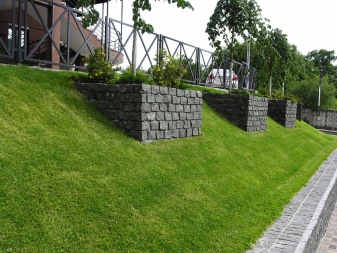
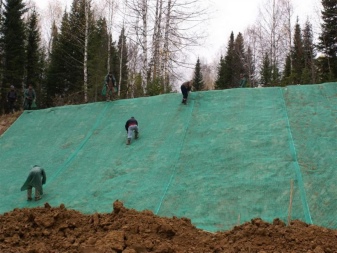
Appointment
A plot set aside for agriculture, construction or improvement rarely has a perfectly flat relief. Much more often owners are faced with the need to strengthen the slopes from slipping after the spring flood, melting snow, heavy rainfall. In addition, when digging a pit, the presence of steep slopes on the site, with a loose, loose structure of the subgrade, it is necessary to take measures to preserve existing objects within the designated boundaries.
The only measure here is to strengthen the slopes to contain landslides and prevent soil erosion.
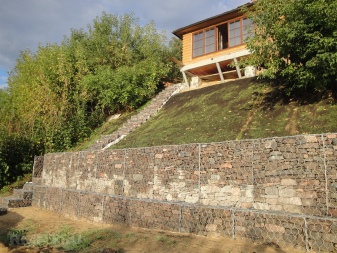
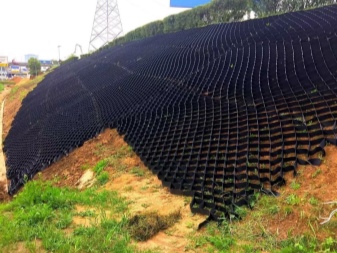
A number of factors are of great importance in strengthening. Among the important points:
- the value of the slope (if up to 8%, it can be strengthened with natural materials);
- terrain characteristics;
- the presence and height of groundwater.
Areas with a more significant slope (more than 8%) have to be strengthened with artificial methods and materials.
Different technologies can be combined to provide the most intense anti-erosion effect. Correctly selected geomaterial allows you to easily form plantings on its surface.
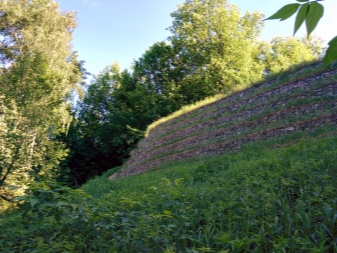
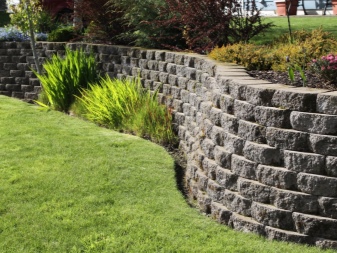
Types of natural materials
Nature has provided opportunities for natural elimination of problems with erosion or increased looseness of the soil. Such ways of improving the surrounding world are called natural... For example, slopes can be strengthened simply by planting plants with strong root systems. There are other effective techniques as well.
- Reinforcement with wooden shields... They are installed along the coastline, harvested from larch, and fixed on driven piles. Installation of such structures requires the most accurate calculation. This method is not recommended for independent use, since it is almost impossible to predict the state of the soil in the coastal line without accurate and thorough research.
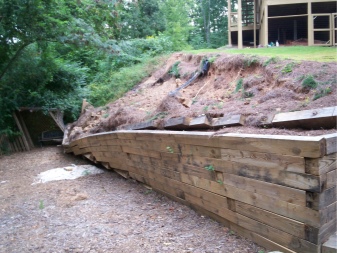
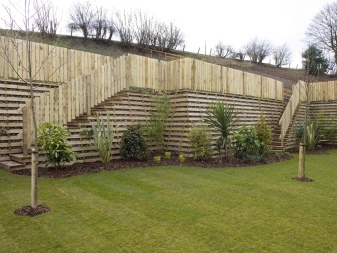
- Laying with willow stakes. Driving willow stakes into the ground in especially weak areas in the spring can be a budget solution. Freshly cut shoots will root easily, and before that they will create a mechanical barrier, elastic and durable. It is worth choosing well-growing willow varieties, while planting is done in tiers.

- Sowing grasses on the slope of the embankment... Grain lawns and ground cover plants are well suited for these purposes. It is necessary to take into account such points as the acidity of the soil, the degree of illumination and the slope of the site.
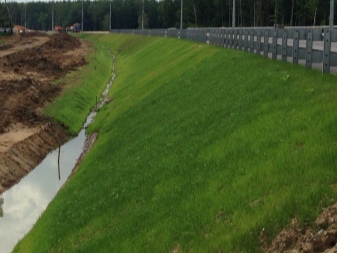
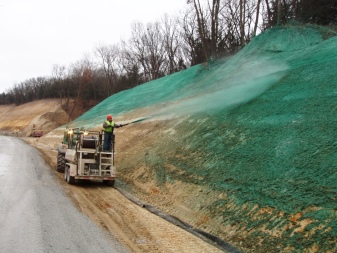
- Planting trees... It is better to avoid plants with creeping roots here, such as raspberries and blackberries, white acacia. To strengthen the slope by planting trees and shrubs, it is worth choosing rose hips, creeping conifers: junipers, thuja, pillow-shaped firs, yews. You can plant chubushnik, climbing roses, wolfberry, Japanese quince or spirea.
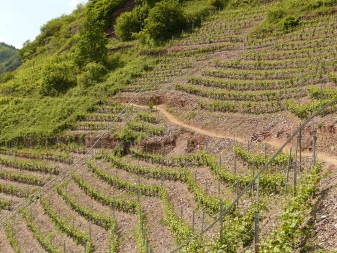

When choosing natural methods to strengthen slopes it is important to remember that not all plants are suitable for these purposes... Among herbaceous crops, lawn and vertical landscaping options are most suitable. Periwinkle is planted on shady slopes, clover and heather are planted on well-lit slopes. On sand and semi-sand, it is better to plant creeping plants: bastard, stonecrop.
Shrubs and trees to strengthen the slopes, you also need to choose the right one. They are characterized by a slower growth, but a powerful underground root system makes it possible to achieve intensive correction of soil shedding problems.
Here it is worth considering all types of low creeping shrubs: creeping and climbing forms, vines.

Artificial methods
The choice of an artificial system for strengthening the slope largely depends on how intense the soil erosion and the curvature of the embankment will be. Flat geostructures allow to strengthen soils with a not too loose structure. These include biomat systems, geogrids, lawn grids. They are also suitable for decorative slopes with greater curvature.
When it comes to functional elements, you should use structures with a more stable structure. For example, geogrids and gabions, which are suitable for reinforcing hills and slopes up to 45 degrees.
If internal reinforcement by natural means is not possible, it is worth considering options with artificial reinforcement of the structure. In this case, the strengthening of the slopes will play both a decorative and a functional role.
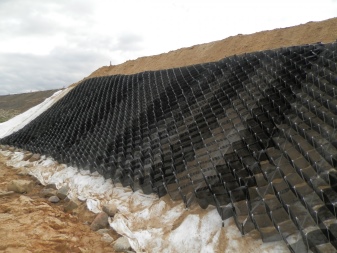
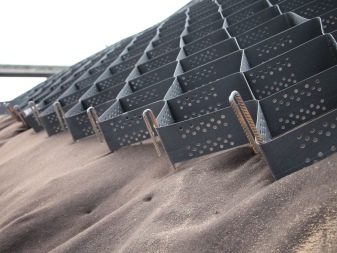
Ceramic blocks
The types of such reinforcing material can be quite varied. Most often it is concrete blocks, slabs, natural stones or artificial materials... Like wooden piles, they are dug in, driven into the slopes in especially weak areas. This type of reinforcement is suitable even for objects with a high risk of landslide. In the presence of water on the slope, a discharge tray, preventing soil erosion. It can be designed as a decorative element on the site.
Concrete and ceramic blocks dig into the slopes. This method is good because it is suitable for the steepest shafts and embankments. Can be used as materials depending on the style of the garden artificially molded and cobblestones.
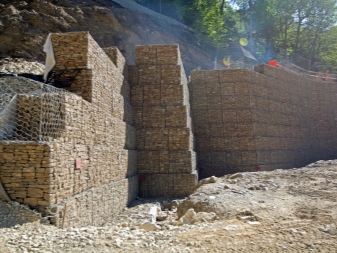
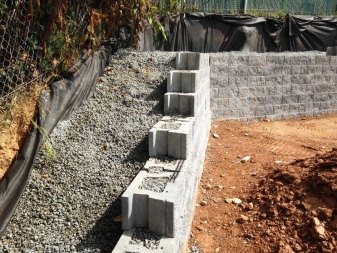
Geotextile
This material has a higher shear strength, which determines its usefulness in strengthening the slopes. The canvas rolls out easily, provides coverage of large areas of the area. Geotextile useful in combating erosion and landslides, helps to increase the level of permissible mechanical loads on the soil surface. It is made in a non-woven way, combining polypropylene and polyester fibers. Geotextile is durable, waterproof, and helps prevent soil layers from shifting when water and snow melt.
Application of materials of this group important for strengthening slopes with a curvature of up to 60 degrees. The anchoring zone is defined with anchors. The slope is leveled before laying the material, and if it is planned to backfill to a certain level, then the soil is excavated. It is these areas that are lined with geotextiles, then a filter cushion is poured onto them.
After that, the non-woven fabric is mounted again. Crutches or staples made of wood or metal are mounted in the places of overlapping decking.
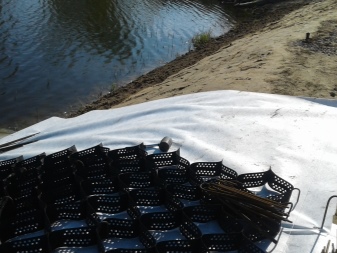
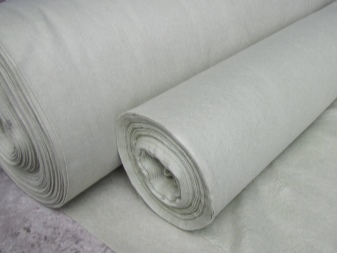
Geomats
It is a material capable of providing effective erosion control or soil creep control. Geomats are made voluminous, but lighter and thinner than lattices. They consist of weaving of many fibers, are a permeable type of reinforcing material. Polymer-based geomats are well suited to be combined with natural slope reinforcement methods. Thanks to water permeability they do not interfere with the growth of lawns, grass and shrubs.
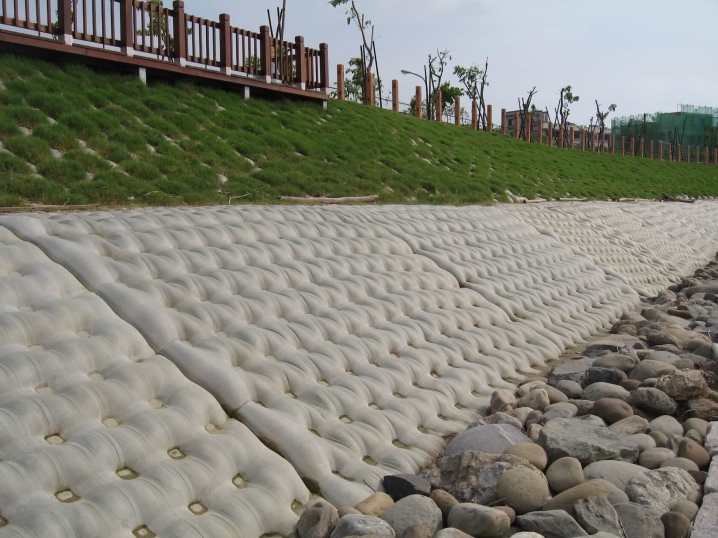
The interlacing of the roots and fibers of the artificial base creates a system that can protect the slope from erosion, washout, weathering, landslides... Geomats can be filled not only with grass and plant seeds, but also with bitumen and crushed stone.This material is suitable for use on slopes up to 70 degrees.
It can be combined with geotextiles, pre-leveling and compacting slopes. A drainage system is laid in advance, an anchor trench is broken through.

Geogrid
On the surface of steep slopes, it is quite actively used technology of mesh fixing of slopes. This material was originally developed for road construction. On the slopes, a mesh made of fiberglass or polyester yarns is used. It is quite tough, is not afraid of high deformation loads, it is easily fixed to the surface of the reinforced slope. This material is suitable for reinforcing slopes with a steepness of up to 70 degrees.
Geonets have good water permeability, are resistant to biological factors, and combine well with natural methods of slope reinforcement. Installation of such a coating is carried out on a rolled surface. The rolls are rolled out manually, in a joint, with fixation with anchors in increments of 1-1.5 m. Then, soil or rubble is dumped, lawn grasses and other plants are sown.
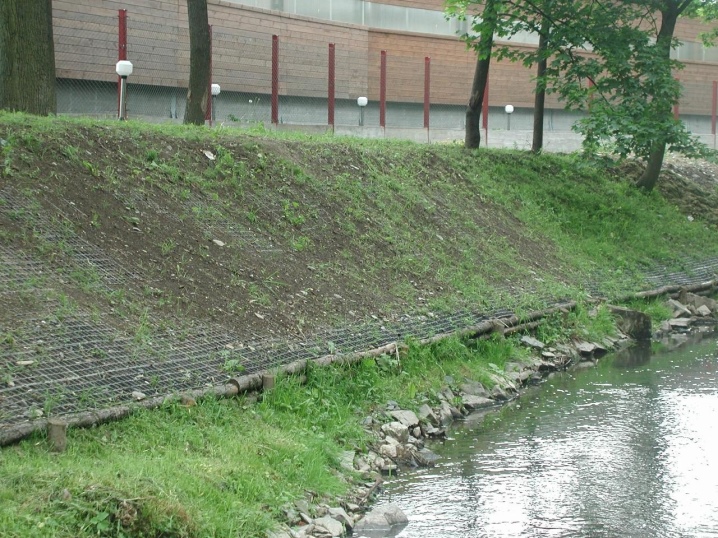
Geogrid
Bulky geomaterial optimally suited for reinforcing slopes with different levels of curvature... After stretching and fixing on the ground, its cells (honeycombs) are filled with crushed stone, peat, and other permeable materials. The geogrid successfully copes with the erosion of ravines, the slopes become more stable, and their sliding stops. The height of the structure varies from 5 to 30 cm, depending on the complexity of the terrain, the load on the slope.
Geogrids are often combined with textile nonwovens.
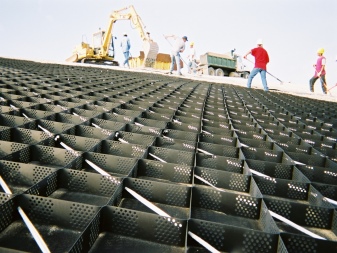
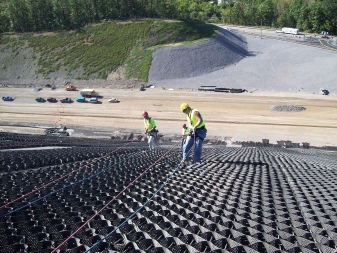
Gabion constructions
A reliable way to reinforce slopes is to create gabions that do not have restrictions on the degree of curvature of the relief. The ecosystem is formed on the basis of monolithic or bulk reinforced concrete structures. The wire frame can be filled with broken stone, pebbles, tiles. Gabion structures are assembled from a mesh with an aluzinc coating or galvanized. In an aggressive environment, PVC coating is additionally applied.
Gabions are assembled in the form of volumetric and flat structures, "mattresses" and retaining walls. Cylindrical elements provide shoreline reinforcement. They are durable, safe, environmentally friendly, and are considered one of the best options for erosion and landslide control.
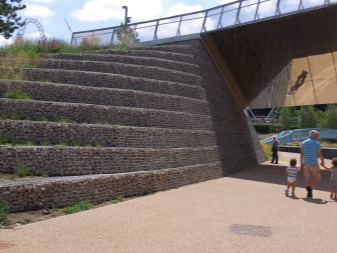
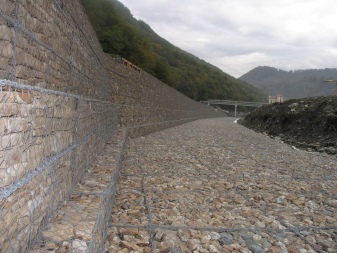
Lawn grill
It is a special polymer material for creating lawns on sloping areas. Lattices are suitable for strengthening objects with small differences in height. They are assembled from modules 400 × 600 mm in size, fastened with locks. Installation is carried out on top of sand and gravel bedding; for greater stability, the installation is done in a checkerboard pattern. The cells are filled with turf and nutrient substrate, and lawn grass seeds are sown in it.
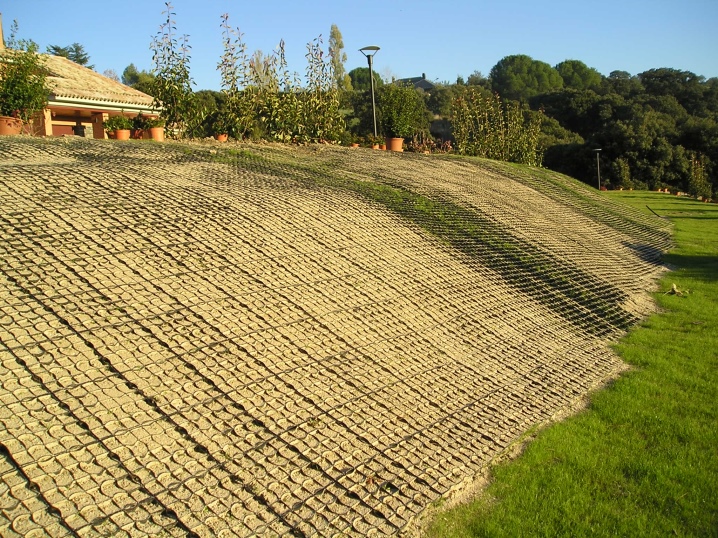
Biomats
The formation of natural barriers on the way of crumbling and spreading of soil layers is carried out on slopes up to 45 degrees, on the surface of swaths. This type of structure has a biodegradable base, which creates favorable conditions for the germination of a natural frame of grasses and shrubs. Implemented as ready-made biomatsand bases on top of which the seeds are then sown... The cellulose layer must be in contact with the soil during installation.
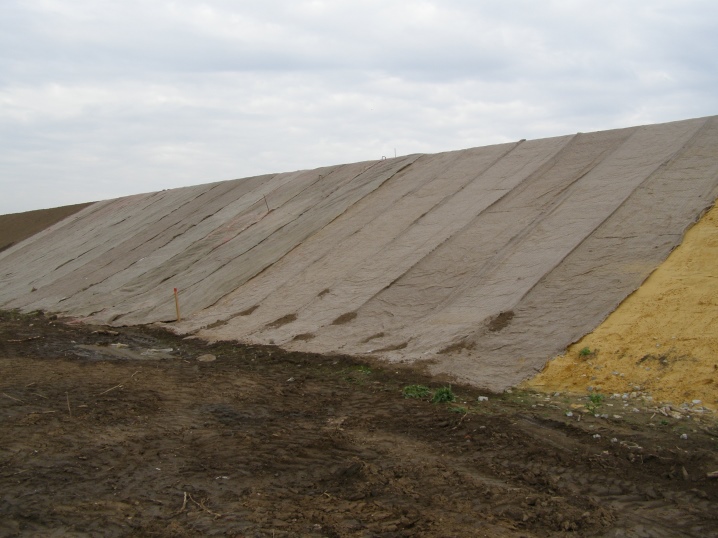
Monolithic concrete
This method of strengthening the slopes is suitable for soft and unstable soils. The concrete solution is injected into the soil layer by injection. The composition is selected depending on the type of soil. After removing the injectors, the wells are plugged. It is impossible to complete such tasks on your own.need the help of professionals.
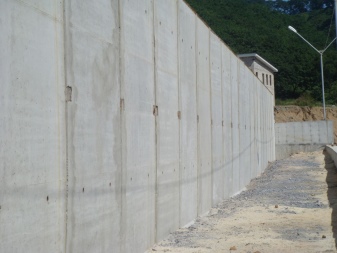
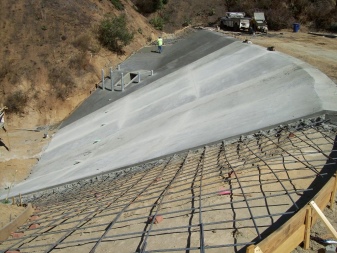
Work technology
When strengthening slopes, it is of great importance the scale of the problem. If it is required to carry out work in the flood zone, then it will be practically impossible without drawings and accurate calculations... Cliffs along the shores of reservoirs, natural and artificially formed, but rather dry slopes can be strengthened on their own.
It is important to understand that disregarding soil erosion, you can get an aggravation of the problem with shedding, jeopardize the integrity of buildings and people's lives.
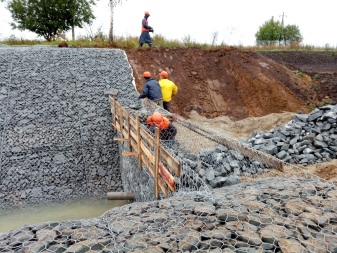

The need to strengthen the slopes arises in the following cases.
- If there are gentle slopes and slopes on the site. If their alignment is not feasible from a financial point of view, but at the same time there are difficulties with the intended use of the object, you can solve the problem using terracing. It is performed using sheet piling.
- If there are ravines on the site that show a tendency to overgrow. Soil erosion, left unaddressed, can lead to serious problems.
- In the presence of sliding cliffs or slopes. Without reinforcement, they can collapse at any moment.
- With the artificial formation of embankments from loose soils. In this case, external strengthening of the soil will help maintain artificial unevenness.
- For clayey soils along the coastline. They are most prone to blurring.
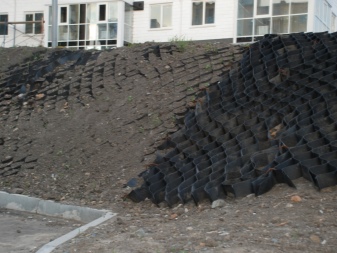
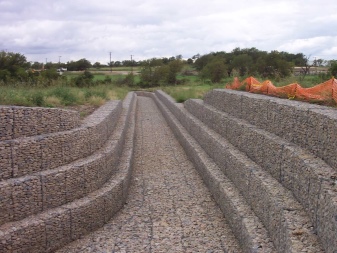
Professional strengthening of slopes is carried out using tongue-and-groove: tubular, metal. In the case of using your own manual labor, it would be wiser to replace the pile structures with less laborious installation options. After assessing the soil composition, the slope of the site, the height of the water table and the risk of erosion, an appropriate method of erosion and shedding control is selected.
If the slope does not exceed 30 degrees, you can simply select suitable plants that can withstand the displacement of the layers of the earth in the vertical and horizontal plane. With more intense elevation differences, combined methods are usually used. For example, at an angle of inclination of 45 degrees the embankments must first be enclosed with gabions, and then a geogrid must be applied in the upper part of the hill, based on an artificial support.
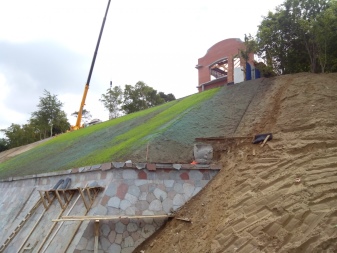
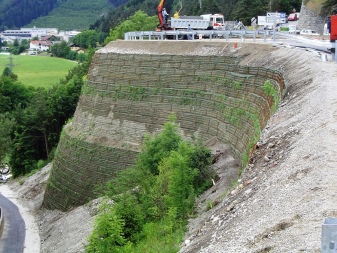
With a very small slope (no more than 15 degrees) instead of gabions, it would be more expedient to erect small retaining walls from scrap materials, having previously drained the perimeter of the site and filled in the ASG. In washed-out or swampy areas, it is most often necessary to use pile supports.
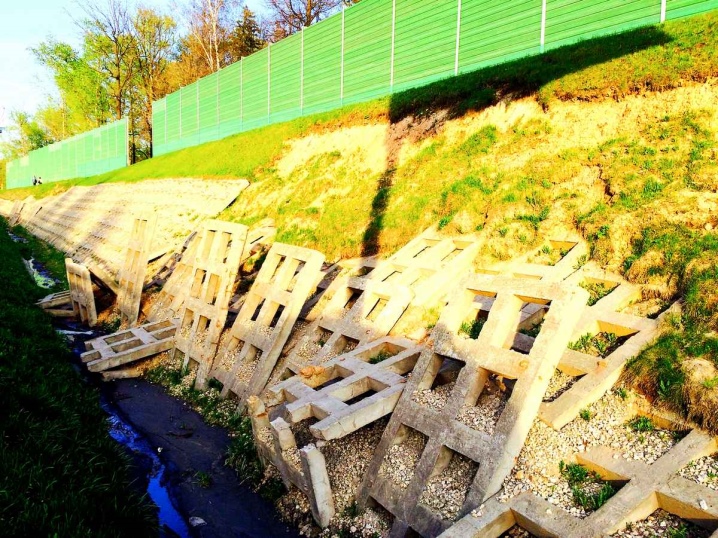
In any case, the strengthening of the slopes is carried out after preliminary preparation, in a season favorable for the work and in the following order.
- Calculations are in progress. It is necessary to determine the total ground pressure. It is performed on the basis of visual observations or by engineering calculations.
- The material is selected. The more intensive the shedding occurs and the more complex the composition of the soil, the more durable the reinforcing elements must be. In especially difficult cases, it is worth getting advice from builders or landscape designers.
- Determination of the working area. This is necessary in order to ensure the correct definition of the development of the future landscape.
- Choice of anchorage. For example, in the presence of concomitant factors: water washes, soil creep, it is required to use combined clamps.
- Implementation. The work is carried out on the ground with the marking of the site and preliminary preparation.
Taking into account all these points, it is possible to carry out work on strengthening the slopes efficiently, professionally and quickly, without even resorting to the help of specialists.
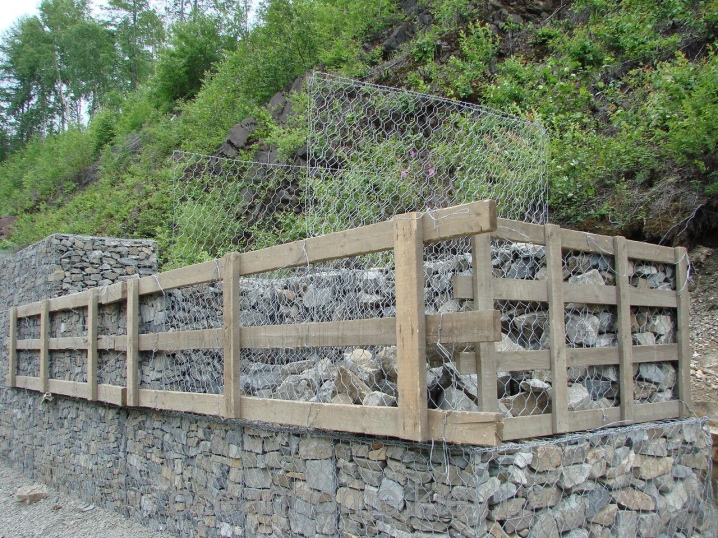
For methods of strengthening slopes on difficult terrain, see below.



































































The comment was sent successfully.